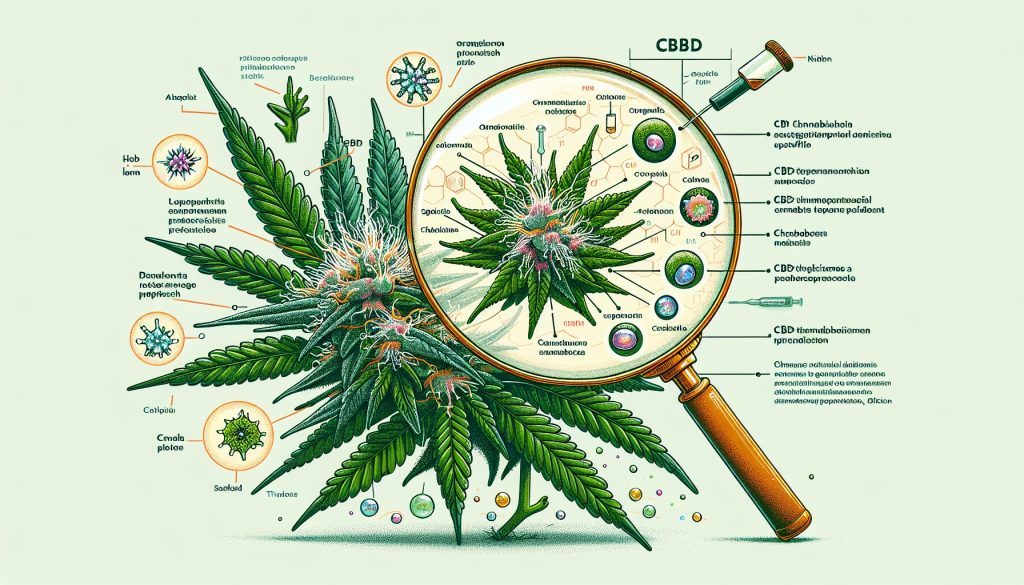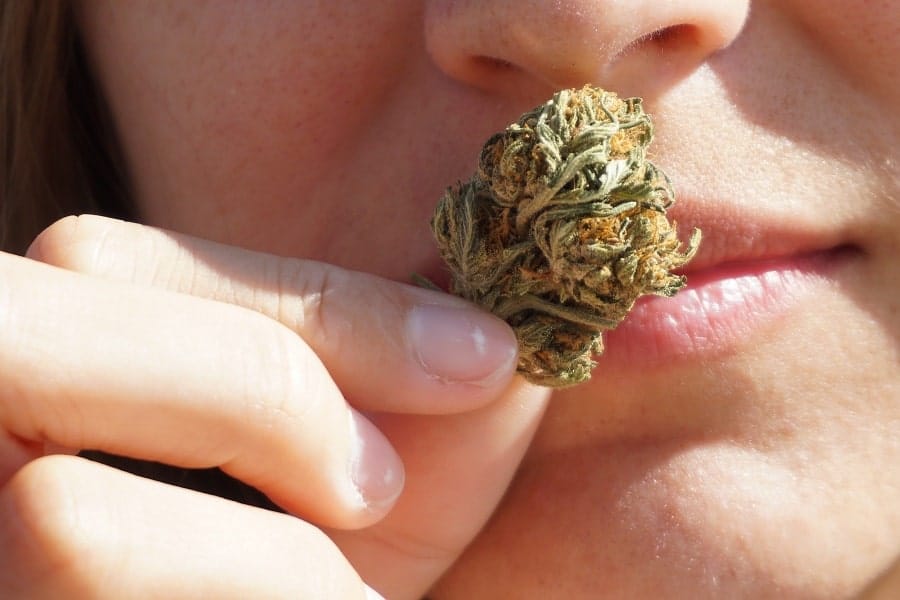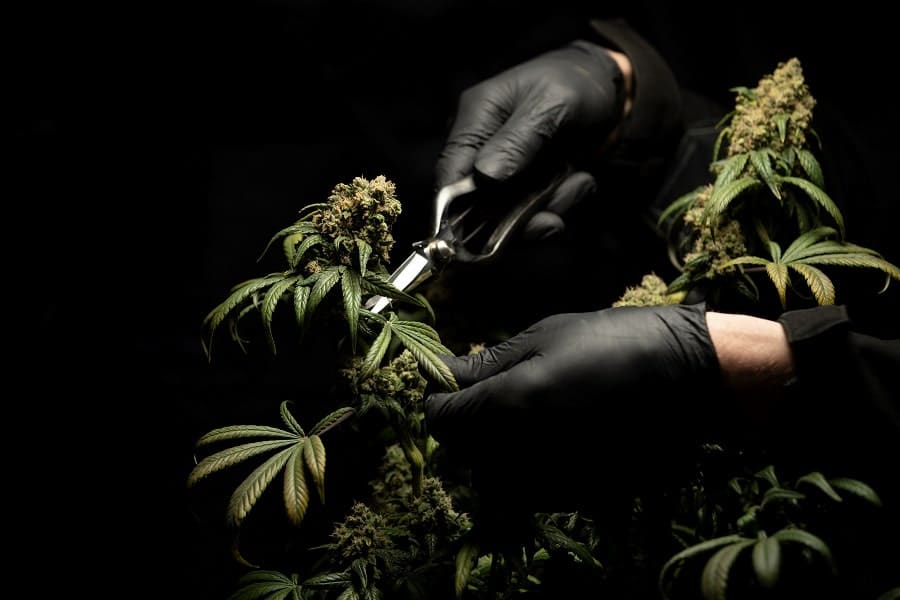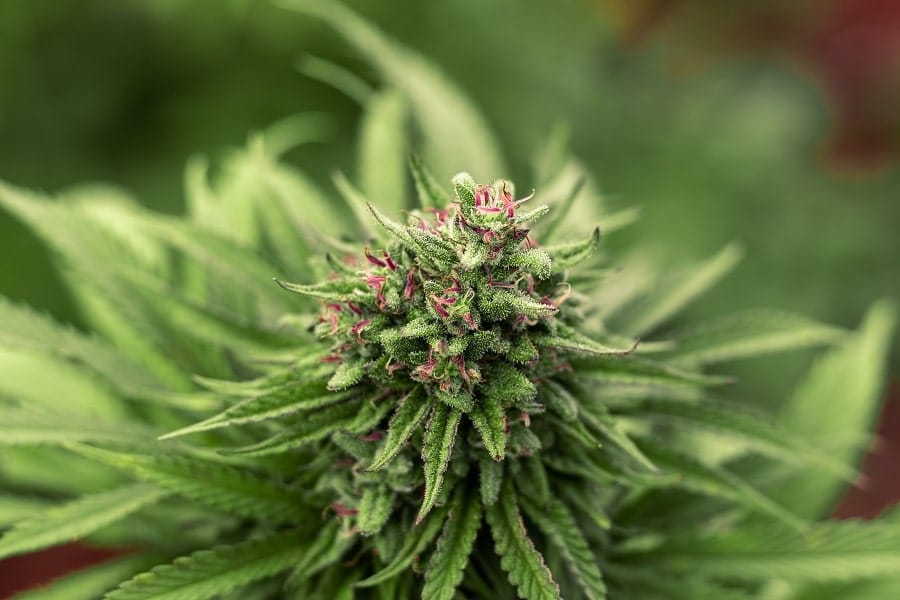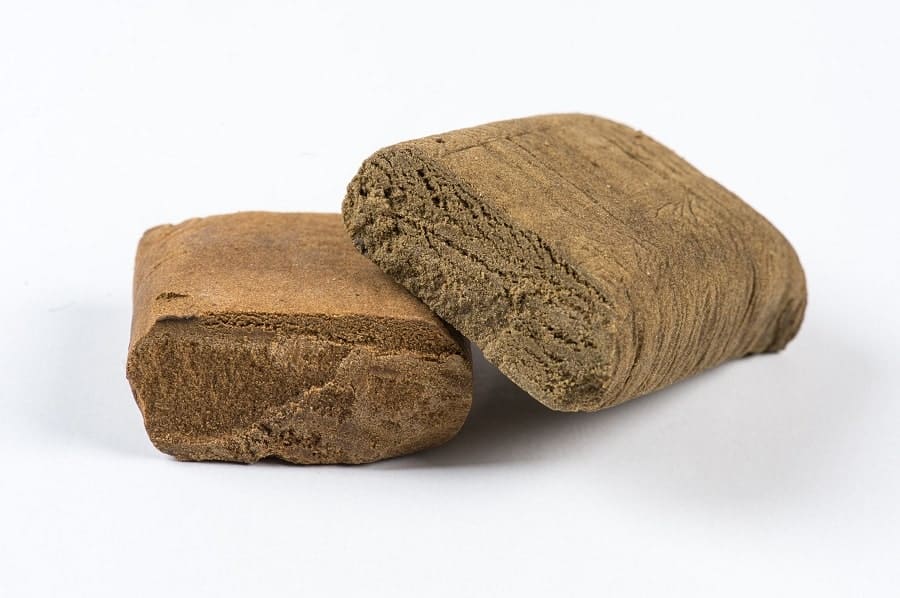When you are interested in CBD cannabis, it doesn’t take much time before you come across a word unknown to non-botanists: trichome. The temptation to ignore it is great…until you realize its importance. The trichomes of hemp (cannabis) are in fact particularly important. They are notably responsible for the production of cannabinoids, including cannabidiol (CBD), and help to protect the plant.
Here’s everything you need to know about CBD trichomes : definition, types of trichome, usefulness and frequently asked questions.
Sommaire
ToggleWhat are trichomes? Simple definition
Trichome is a word that comes from the Greek trikhoma, literally “hair growth”. In botany, it designates a thin growth which is located on roots, stems and/or leaves plants. Depending on the variety, they may have a defensive function, for example to repel insects or protect the plant against the cold or, on the contrary, extreme heat.
If producers and consumers of CBD cannabis are so interested in these small translucent vesicles, it is because they are the ones that secrete cannabinoids (cannabidiol in particular) as well as terpenes, notably responsible for effects and aromas. At least this is true for some trichomes, as there are different types. We’ll come back to that in a moment!
On a hemp plant, the visible trichomes look like small hairs present on its epidermis. They are nevertheless essentially focused on heads. Also full of resin, they are particularly sticky.
Do you want to know more about the different elements of the hemp plant and the names given to its derived products? Find many additional explanations in our cannabis glossary.
Why take a close interest in CBD trichomes?
Knowing the visual appearance and functions of trichomes has two considerable advantages. This is also true for professionals in the cannabis market as well as for private growers, in countries where this is obviously authorized. There Swiss is notably one of the French-speaking countries where hemp cultivation for personal consumption is permitted.
- Maximize cannabinoid production: without trichomes, no CBD, of CBG or CBN. Also no terpenes which contribute to the fragrance andentourage effect. Knowing trichomes well helps promote their production, especially when pruning.
- Know when to harvest: recognizing the appearance and development of trichomes is essential to harvest at the right time and therefore obtain optimal effects.
The different types of cannabis trichomes
Let’s not hide our faces, 99% of the time, when we are interested in cannabis trichomes, it is in relation to the cannabinoid production. However, there are different types, different appearances and sizes. They also do not all produce CBD or other cannabinoids.
Cannabis trichomes
| Kind | Size | Location | Function | |
| Glandular trichomes | Peltate (or stemmed) capitulates | The largest (visible to the naked eye) | On the flowers | Production of cannabinoids and terpenes |
| Sessile capitulates | Midsized | On leaves, stems and calyxes of flowers | Production of cannabinoids and terpenes (in smaller quantities) | |
| Bulbous (or bulbiferous) | Smaller | On leaves, stems and calyxes | Production of cannabinoids and terpenes (in smaller quantities) | |
| Non-glandular trichomes | Unicellular | A single cell | On leaves, stems and calyxes | No ability to secrete resin or produce active compounds |
| Protective hairs | Variable (a few tens of micrometers to a few millimeters in length) | On leaves and stems | Protection (physical barrier against predators, reduction of water evaporation, temperature regulation) | |
| Cytolytics | Small (invisible to the naked eye) | On the upper surface of leaves and stems | Defense against herbivores |
Depending on the varieties and growing conditions, the density and distribution of cannabis trichomes can vary. This is all the more true as many growers specifically select varieties to high content of glandular trichomes to maximize the production of cannabinoids and terpenes.
Frequently Asked Questions About CBD Trichomes
Which CBD derivatives mainly contain trichomes?
THE CBD resins and pollens, as well as all their variations (kief, hashish, etc.), arise directly from the extraction of trichomes. They therefore constitute an excellent means of make the most of cannabinoids and terpenes of a variety given. L’CBD oil, especially broad or full spectrum, also comes from trichomes from which cannabinoids are extracted and associated with a vegetable oil base.
When do cannabis trichomes appear?
It depends on the type of trichomes. Some, like cytolytic trichomes, appear very early in the plant’s growth to help him defend himself. Others, such as glandular trichomes which contain cannabinoids (particularly stemmed capitulum trichomes), appear at the time of bud development, what is commonly called CBD flowers.
When is a CBD trichome ready?
Color is a great indicator. Thus, a transparent trichome is not yet mature. He then takes a cloudy color, whitish, which it keeps for about two weeks. Little by little, certain trichomes of the plant turn amber : this is the best time for harvesting the buds.
How to mature trichomes?
The production of trichomes (both in quantity and quality) depends largely on light. When they do not ripen, it is possible that the duration and/or intensity of sunlight is not sufficient. Adjusting the exposure to light and removing excess foliage that absorbs the plant’s energy are two good ways to help it. Ceasing watering can also create a state of stress that accelerates the creation of resin and maturation. On the contrary, avoid fertilizers that would only accumulate in the trichomes!

